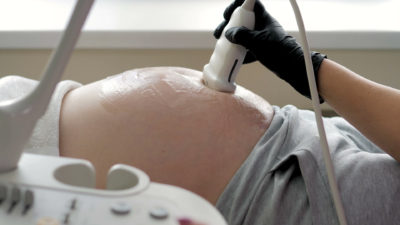Call today and speak to Jason Brady, specialist medical negligence solicitor. Find out if you can claim compensation.
CALL 0800 083 5500

At the end of March, The Donna Ockenden report was published. This long-awaited report was based on investigations at the Shrewsbury and Telford Hospital and lays bare a number of damning findings into poor maternity care in the largest maternity scandal in the history of the NHS.
Birth injury solicitors, Blackwater Law outline some of the key findings from the comprehensive report in the first of our series of articles dedicated to the Ockenden report.
Commissioned by the government in 2017, the report was initially focused on 23 cases of concern following a number of parents raising the alarm about poor care that they had received. However, during the course of the investigation it became apparent that the poor care across the Shrewsbury and Telford NHS Trust ran far deeper and upon publication the report covered 1,486 families and 1,592 clinical incidents between 2000 and 2019.
Given the scale of the investigation required, the report includes feedback from staff at the Trust, first-hand experiences of families who suffered poor care as well as reviewing the processes and investigations undertaken by the Trust when an incident arose.
The Trust had a number of birth injury claims as a result of the poor care that families received.
The report uncovered systematic failings by the Trust, with devastating consequences for mothers, babies and their families. Shockingly, the inquiry found a total of 295 avoidable baby deaths or brain damage cases as a direct result of poor maternity care. This includes 131 stillbirths, 70 neonatal deaths and 84 cases of brain damage in babies.
It was also found that 9 mothers died as a result of avoidable poor care.
The catastrophic failings can be attributed to a number of reasons including a reluctance to perform caesarean sections in order to preserve the Trust’s ‘natural birth’ figures. Staff also did not act in accordance with national guidelines and were “overly confident” in their ability to handle complex pregnancies. An example of this, is waiting for 90 minutes to call an ambulance where national guidelines stipulate this should be completed within 10 minutes.
Perhaps most disturbing of all, is that in some instances, fault for the death of babies was placed on the mothers themselves, no doubt compounding their grief further. Additionally, it appeared that those questioning the quality of their care often had their concerns dismissed and found it near on impossible to ascertain answers themselves. It is thought that a number of these families resorted to legal action through a birth injury claim in order to assist with establishing the true circumstances surrounding their case as they felt unable to obtain this information from the Trust.
A number of essential actions for the Trust have been identified within the report to ensure that there are improvements on the quality of care provided to mothers, babies and their families. It is hoped that these actions can also be implemented by other Trusts to increase the quality of care and to minimise the number of birth injuries that arise as a result – each of which has a devastating impact on the families around them.